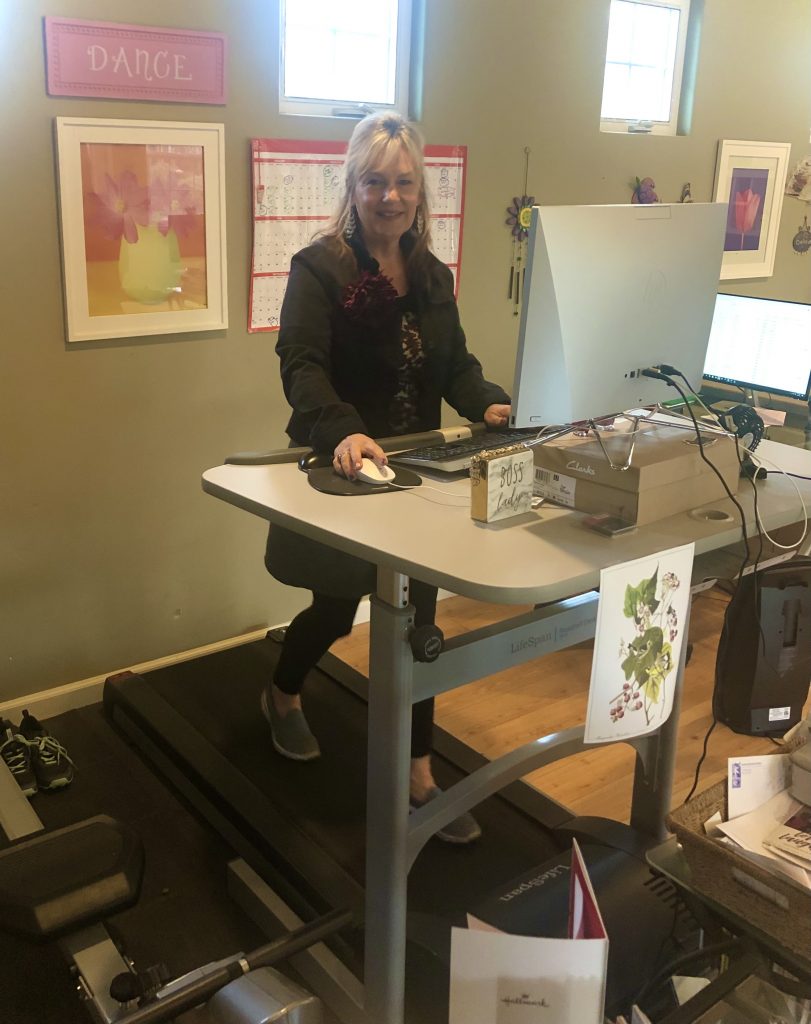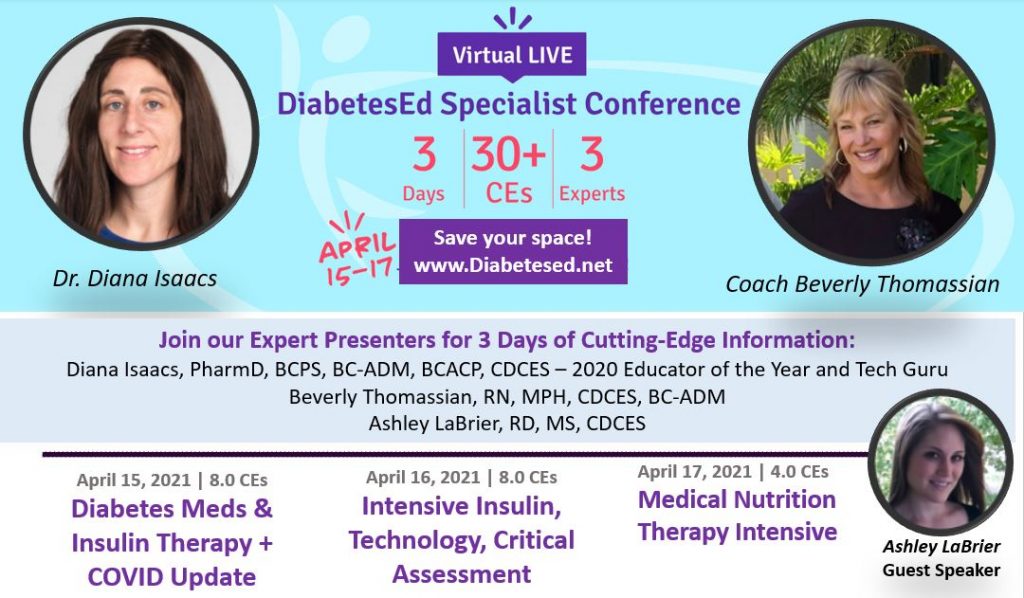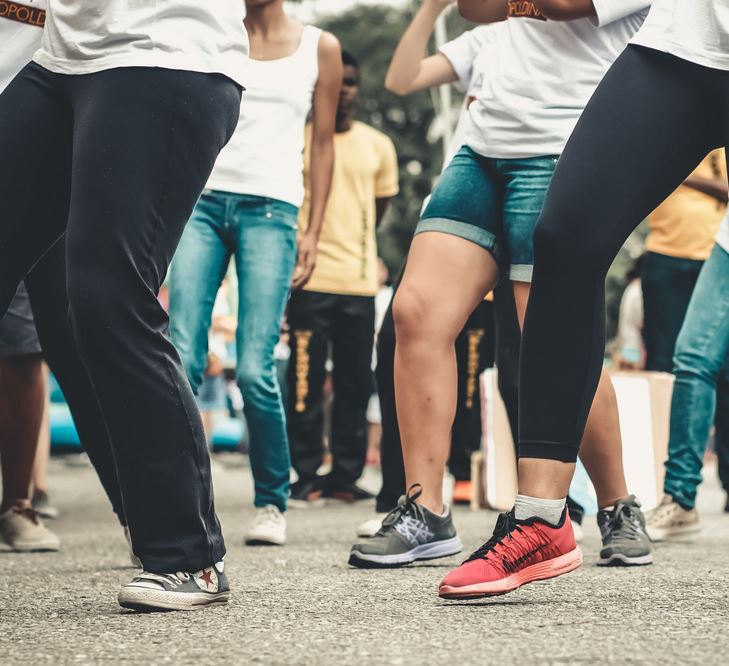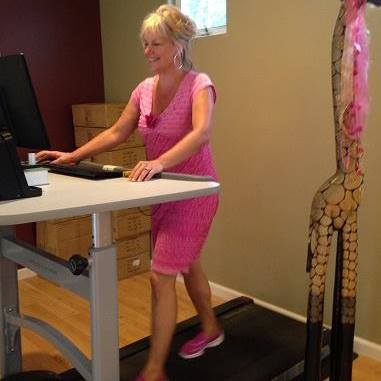5 Myths About Exercise, Sitting and Sleep Unpacked

I started walking while working 7 years ago after reading research on how “sitting was the new smoking”. I purchased my treadmill desk in 2013 and since that time, I have been walking 7 miles a day, through a combination of my treadmill desk and outdoor strolls.
Over the past 7 years, I have accumulated almost 18,000 miles in an attempt to prevent heart disease, cancer, and a myriad of other chronic health problems. But it seems there is more to the story.
Is “sitting the new smoking?”
The Terry Gross interview with Daniel Lieberman, a professor at Harvard in the department of human evolutionary biology, put my beliefs into question. Dr. Lieberman recently penned a book called “Exercised”, which details his research finding and dispels some commonly held myths.
Besides being a super-smart paleoanthropologist and professor, Lieberman has also spent a lot of time with indigenous hunter-gatherers in Africa and Latin America. He has observed and cataloged how much time they spend walking, running, lifting, carrying, and sitting.
Surprising Findings. 5 myths unpacked.
- You have to walk 10,000 steps a day to be healthy.
Based on current hunter-gathering behaviors, Dr. Lieberman calculates our ancestors walked about 5 miles a day or 10,000 steps. The average adult in America walks about half of that distance or 5,000 steps a day which equals 2.5 miles. This number might be even lower over the past year, given the pandemic and people working from home.
Even though we walk less than our ancestors, Lieberman is encouraging. He says if 10,000 steps feel out of reach, it’s okay to aim for less, as long as the person focuses on movement and engaging muscles to prevent atrophy. Any movement is better than no movement!
“The more we study physical activity, the more we realize that it doesn’t really matter what you do,” Lieberman says. “You don’t have to do incredible strength training … to get some benefits of physical activity. There’s all different kinds of physical activity, and it’s all good in different ways.”
Daniel lieberman
2. Hunter-gatherers sit a lot less than modern humans.
Not true. Surprisingly, research on hunter-gatherers reveals that they sit for 10 hours a day on average, which is the same amount of times the average American sits.
Humans are designed to conserve energy in case of a lack of adequate nutrition. Most hunter-gatherers Lieberman studied don’t have chairs, but they spent a great deal of time sitting. This lack of chairs is actually associated with better spine and back health (see more below)
3. Sitting is really that bad for us.
Interrupted sitting is a far better approach than nestling your body in a comfy chair for hours at a time.
Time spent sitting at work isn’t the major problem. It’s leisure time sitting for hours at a time that is associated with poor health outcomes like heart disease, cancer, or diabetes.
But regardless of sitting at work or home, just getting up every once in a while, every 10 minutes or so makes a big difference in health outcomes.
Try to intentionally get up frequently to go to the bathroom or pet the dog or make yourself a cup of tea. Even though you’re not spending a lot of energy, you’re turning on your muscles. Since muscles are the largest organ in your body, using them decreases inflammation and burns fat and glucose.
4. You can prevent back pain by getting lumbar support or a fancy chair.

Another myth.
Up until recently, only the upper class had chairs with a seatback. Most human beings usually sat on the ground, stools, or benches. The problem with chairs with backs is that sitting becomes more of a passive activity since you use fewer muscles to stabilize your upper body.
Using chairs with seat backs result in weaker back muscles that begin to atrophy due to disuse.
Chairs with lumbar support and lots of cushioning may encourage sitting for longer periods of time, which may further contribute to muscle loss.
5. Getting 8 hours of sleep a night is essential for well being
Based on Lieberman’s research of people who live in places where there is no electricity and computer screens, they don’t sleep more hours than the average American.
People in regions without electricity sleep on average 6.7 to 7.1 hours a night.
Lieberman says we need to stop sleep shaming.
It is true, that not getting enough sleep (4-5 hours a night) can be detrimental to health. But, if a person is getting 6 or 7 hours of sleep a night and they feel fine, that is what is most important.
Thanks for reading this article by Coach Bev who is typing while walking on her treadmill.
Read the complete article here: Just Move: Scientist Author Debunks Myths About Exercise and Sleep
Please see our Exercise Resource Page for handouts to share
Save your spot for our
Virtual DiabetesEd Specialist Conference | April 15-17, 2021

Whether you are new to diabetes or a seasoned expert, you’ll benefit from this virtual conference with the latest research plus critical content that you can immediately apply to your clinical practice. If you are interested in taking the CDCES or BC-ADM exam or are seeking a state-of-the-art review of current diabetes care, this course is for you.
DiabetesEd Virtual Conference Flyer 2021
Diabetes Ed Virtual 3-Day Schedule 2021
Entire Program Fee: $399
Dates: April 15-17, 2021
3 Expert Speakers
CEs: 30+ CE hours
Live Webinar Schedule: All webinars start and end times are in Pacific Standard Time
Come join our Virtual DiabetesEd Specialist Program.
Team of expert faculty includes:
- Diana Isaacs, PharmD, BCPS, BC-ADM, BCACP, CDCES – Educator of the Year, 2020
- Coach Beverly Thomassian, RN, MPH, CDCES, BC-ADM
- Ashley LaBrier, MS, RD, CDCES, Diabetes Program Coordinator
In addition to informative lectures, we also use group activities and case studies to highlight the essential knowledge, skills, and strategies needed to succeed in diabetes education today!
Prepare for CDCES or BC-ADM certification or earn hours for renewal.
Your registrations include access to all the Online Sessions plus Bonus Courses through December 31st, 2021.
This virtual program includes:
3 day live webinar courses from April 15th-17th (20 CEs) + enrollment in our Bonus Bundle (14.0+ CEs) from now through December 2021.
- Live Q & A Session with the instructor after each webinar
- Presentations by our team of experts
- Handouts and Resources for each session
- Post-test questions
- A sense of community
- If you can’t attend the live webinars, a recorded version will be posted later the same day for viewing.
View full Conference Schedule and Faculty.
DiabetesEd Virtual Conference Flyer 2021
Diabetes Ed Virtual 3-Day Schedule 2021
Sign up for Diabetes Blog Bytes – we post one daily Blog Byte from Monday to Friday. And of course, Tuesday is our Question of the Week. It’s Informative and FREE! Sign up below!
[yikes-mailchimp form=”1″]The use of DES products does not guarantee the successful passage of the CDCES exam. CBDCE does not endorse any preparatory or review materials for the CDCES exam, except for those published by CBDCE.
“Awe” Walks Improve Well-Being
Looking for awe helps us move from dis-ease to a sense of well-being.

We all know the physical health benefits of walking, but what if we add the intention to experience “awe” during our jaunts?
Researchers divided older subjects, (60 years plus) into 2 different groups. Both groups walked for 15 minutes and logged how they were feeling and thinking about during their walks.
Intentionally Look for Awe
However, the experimental group was asked to walk for 15 minutes in a natural setting and to intentionally look for moments of “awe” during their outings.
In the study, people who took a fresh look at the objects, moments and vistas that surrounded them during brief, weekly walks felt more upbeat and hopeful in general than walkers who did not. The findings are subjective but indicate that awe walks could be a simple way to combat malaise and worry.
Gretchen Reynolds
Examples of “awe” discoveries could include simple things like noticing a frog peeking at you from a nearby pond. Or observing the variety of hues during sunset. Or looking up at the sky through a rainbow of trees.

Awe Moments Improve Well- Being
As expected, the study participants who simply looked for these moments of awe, had an associated improvement in their sense of well being. Overall, the awe walkers felt happier, less upset, and more socially connected than the men and women in the control group.
The Take-Home Message is “Awe” some
As diabetes specialists, we encourage people to walk to help lower glucose, improve balance, and gain muscle mass. By adding this element of awe, we just might be helping people gain enhanced quality of life too.
Life is hard right now and many people are feeling isolated and sorrowful. By taking a fresh look at these little wonders all around us, it reminds us that we are a part of something bigger than ourselves. And in that knowing, that each of us is important, meaningful, and loved.
Happy Monday. Love, Coach Beverly
Sign up for Diabetes Blog Bytes – we post one daily Blog Byte from Monday to Friday. And of course, Tuesday is our Question of the Week. It’s Informative and FREE! Sign up below!
[yikes-mailchimp form=”1″]Accreditation: Diabetes Education Services is an approved provider by the California Board of Registered Nursing, Provider 12640, and Commission on Dietetic Registration (CDR), Provider DI002. Since these programs are approved by the CDR it satisfies the CE requirements for the CDCES regardless of your profession.*
The use of DES products does not guarantee the successful passage of the CDCES exam. CBDCE does not endorse any preparatory or review materials for the CDCES exam, except for those published by CBDCE.
Medical Nutrition Therapy + Meal Planning | Virtual Course with Dana Armstrong | 4.0 CEs
Diabetes Intensive with Dana Armstrong, RD, CDCES | Medical Nutrition Therapy + Meal Planning

Join Dana Armstrong, RD, CDCES, a trailblazer and thought leader, for a lively and intensive review of the latest in Medical Nutrition Therapy with immediate application to your clinical practice.
Dana combines the newest findings, her clinical experiences, plus the ADA Standards of Care into an action-packed presentation that will inform your practice while preparing for the certification exam.
Virtual MNT Course Dates:
Session 1 May 27 | Medical Nutrition Therapy Overview | Ready for Viewing!
Session 2 May 27| Meal Planning – How to Eat by the Numbers | Ready for Viewing!
$69 | Earn 4.0 CEs
Course Description: These two 2-hour courses review the latest national nutrition guidelines and provide strategies to translate this information to an individual living with diabetes.
Included is a discussion on different approaches to meal planning and the benefits and limitations of each. Dana will also review metabolic surgery, gastroparesis, and disordered eating.
She reviews nutrition approaches during pregnancy and for those living with chronic co-conditions. Dana also provides insights on how to support the transition to healthier eating using a “tasteful” approach.
Objectives:
- Prioritize person-centered nutrition issues based on assessment and clinic data.
- Explore national guidelines for medical nutrition therapy and how to individualize interventions from a person-centered perspective.
- Describe the impact of micro and macronutrients on health.
- List different meal planning approaches and the pros and cons of each.
- Describe how to help people with diabetes to read labels and be thoughtful consumers.
- State how to customize nutritional approaches in people living with complications of diabetes.
Speaker Bio for Dana Armstrong, RD, CDCES
We are thrilled to welcome our guest speaker, Dana Armstrong, who will be joining our Virtual and Live Courses!
Dana received her degree in nutrition and dietetics from the University of California, Davis, and completed her internship in dietetics at the University of Nebraska Medical Center in Omaha. Dana is the Medical Clinic Director of The Diabetes Center/Salinas Valley Medical Clinic. She provides leadership for the Department of Diabetes Services and ensures coordination and integration of an effective system-wide Diabetes Center of Excellence across the organization for optimum patient care and collaboration of services. Having a child with diabetes, she combines her professional knowledge with personal experience and understanding.
These sessions are also included in our Virtual Conference.
Click here to enroll in the entire program.

Sign up for Diabetes Blog Bytes – we post one daily Blog Byte from Monday to Friday. And of course, Tuesday is our Question of the Week. It’s Informative and FREE! Sign up below!
[yikes-mailchimp form=”1″]
Accreditation: Diabetes Education Services is an approved provider by the California Board of Registered Nursing, Provider 12640, and Commission on Dietetic Registration (CDR), Provider DI002. Since these programs are approved by the CDR it satisfies the CE requirements for the CDCES regardless of your profession.*
The use of DES products does not guarantee the successful passage of the CDCES exam. CBDCE does not endorse any preparatory or review materials for the CDCES exam, except for those published by CBDCE.
Mindful Monday | 8 Steps to Live Healthier
There are a number of “life hacks” out there recommending adding butter to coffee, taking specific miracle supplements, or engaging in even more extreme methods like blood transfusion, all in an attempt to slow aging, improve health, and decrease weight.

However, the simple approach of regular exercise, healthy eating, and not smoking increases longevity and enjoyment with the additional benefit of increased lifespan in a multitude of studies.
In 2011, the American Journal of Public Health published such a study showing these lifestyle behaviors can increase lifespan by 11 years.
In 2016, the British Medical Journal found the following lifestyle behaviors reduce all-cause mortality 61 percent! Brad Stulberg of Outside Magazine, has compiled a number of these studies and synthesized the lifestyle changes in to 8 simple steps:
8 Simple Steps to Live Longer
- Move Around: 30 minutes of moderate to intense daily physical activity can lower heart disease, cancer, and other physiologic diseases as well as psychological ones!
- Eat “Real Foods”: avoid plastic wrapped foods, it normally means they are ultra processed, which can result in excessive calorie consumption without as much nutrition.
- Call Friends & Family: social connection is associated with reduced cortisol and improved sleep quality, among other positive effects.
- Avoid Supplements: without proven deficiency or need, studies have often shown more harm than good from supplements.
- Sleep 8 Hours: continuous deep sleep is critical for mental and physical health.
- Enjoy Nature: getting outside can curb negative effects of stress and alleviate anxiety and depression.
- Don’t Smoke: it’s associated with dozens of cancers and causes 1 out of every 5 deaths in the U.S.
- Don’t Drink Too Much: excessive alcohol use is associated with chronic diseases. “Moderation is key.”
Read more here.
Sign up for Diabetes Blog Bytes – we post one daily Blog Byte from Monday to Friday. And of course, Tuesday is our Question of the Week. It’s Informative and FREE! Sign up below!
[yikes-mailchimp form=”1″]Can Hair Stop Exercise?
Many may find they don’t want to exercise because they want to avoid sweating or what sweating may cause. For women it can be a hassle to have to shower off after a workout, but for many African American women it can be a larger hurdle. Health Day News reports on this difficulty and the fact that many providers are unaware of this particular issue as a barrier to exercise.

Researchers at Ohio State University found that 95% of doctors speak with African American, females about exercise, but 76% of them do not include hair in the discussion and only 34% were comfortable with the idea of discussing hair along with exercise.
Dr. Tolliver is a family medicine physician at Ohio State and was the lead researcher in this study. She explained:
It’s going to come down to increasing education about African-American hair, African-American females’ cultural practices when it comes to hair, and how you can counsel a patient in an office visit about decreasing that barrier.
Dr. Tolliver advised that for African American women wanting to become more physically active, but who consider hair a barrier:
- If you’re new to exercise, consider starting with low-impact exercise, such as walking, to minimize perspiration.
- Try a protective hairstyle, such as braids, twists, buns or extensions.
- Schedule more strenuous workouts on a day you plan to wash your hair.
Read more at Health Day News.
Sign up for Diabetes Blog Bytes – we post one daily Blog Byte from Monday to Friday. And of course, Tuesday is our Question of the Week. It’s Informative and FREE! Sign up below!
[yikes-mailchimp form=”1″]Mindful Monday – Soul Line Dancing offers exercise and connection
As lifestyle coaches and diabetes specialists, we all know how important regular activity is to improve well-being, glucose levels, and overall health. Yet, keeping engaged in an ongoing activity is one of the biggest challenges most people face.
Soul line dancing might just offer an unexpected solution.

Soul line dancing – like country line dancing – is really just choreographed dance moves that you do in a group, without a partner. “It’s a sneaky way to get exercise in”
Andrea powell – soul dancing devotee
This activity offers the benefit of connecting with friends, learning a sequence of moves (that is great for brain function) and having fun. It’s an efficient way to improve cardiovascular health and keep fit.
Soul line dancing is held in local churches, gyms, community recreation and senior centers. “There is such enjoyment and that is part of music and part of rhythm, and is almost innate in humans,” say Terri Lipman, a professor in the School of Nursing at the University of Pennsylvania. Lipman is collecting data on the impact of soul dancing programs and says that the data shows that soul line dancing counts as moderate exercise.
Since soul line dancing is an exercise that is both fun and social, it creates a habit that is more likely to last for the long run!
Read more here from NPR Story: Soul Line Dancing: Come For The Fitness. Stay For The Friendships
And, if you want to learn the World Diabetes Day Flash Mob, here are the steps and a video. Just in time for National Diabetes Month in November.
Sign up for Diabetes Blog Bytes – we post one daily Blog Byte from Monday to Friday. And of course, Tuesday is our Question of the Week. It’s Informative and FREE! Sign up below!
[yikes-mailchimp form=”1″]5 Steps to Stop Sitting and Increase Longevity

New studies show that sitting for too long can impair health and even shorten life expectancy. It’s difficult to keep active in a world of screens, movie theaters, and desk jobs. However, studies are showing that body awareness and movement is necessary. The goal is to get up at least every hour of sedentary time, to improve posture and metabolic rate.
Medical News Today published an article on proper posture while sitting, showing just how difficult it is to maintain good postural health, with over ten variables to consider. Sitting and staying in one position for more than an hour increases the likelihood of poor posture, decreased metabolism, and inhibits blood flow, which can worsen circulation problems for people with diabetes.
Here are several strategies to lessen their sedentary time and get healthier:
1. Standing Desk/Treadmill Desk
Office Fitness Industry News encourages employers to spend their wellness funds on standing desks or treadmill desks, rather than spending money on a wellness program that offers employees under-utilized gym memberships.
Standing desks help improve posture by allowing people to stand, stretch, and interrupt their sitting time. Simply standing more can help tone muscle, increase metabolism, and prevent diabetes complications. However, some may have difficulty standing for long periods of time. A treadmill desk may feel more natural and compounds the benefits of standing desk: burning extra calories, increasing creativity in the workplace, and potentially even increasing mental acuity for kinesthetic learners or those with ADD.
Even if an employer won’t provide a standing or treadmill desk, just standing up every hour helps counteract a lot of the issues associated with sitting too much.
2. HIIT It!
Taking brief exercise breaks during the day can help tremendously. It doesn’t require going to the gym, or even using your full 10 – 15 minutes in the morning or afternoon. HIIT, or High Intensity Interval Training, only needs to be done in 30 second bursts to be effective. This can include 30 seconds of sprinting in place or doing quick push-ups against a counter (such as in a break room or bathroom). You can find more HIIT exercises that can be done in just 30 seconds, here.
3. Take More Breaks
Many people may only get two 10-15 minute breaks per day plus lunch, but that doesn’t mean they have to be chained to a desk at all other times. Refilling water bottles or glasses every hour can help interrupt sitting and also offer a refreshing mental break from staring at a screen or papers. If the job requires reviewing or reading documents, try doing this while standing or pacing to interrupt the monotony of sitting.
4. Treat the Feet
Suddenly switching from sitting to standing can be tough on lower extremities, and for those already standing most of the day because of their job, proper foot care is important to lessen fatigue and prevent ending the day on the couch until bed.
Wearing thicker socks and cushioned sole inserts can help during the day. Ending the day with an Epsom salt foot bath and lotion can help ease soreness, increase circulation, and help you get back on feet the next day.
5. Stay NEAT
NEAT means non-exercise activity thermogenesis. All it requires is simple stretches, twists, and bends to break up your sitting every hour. Practicing NEAT helps increase circulation, ease back pain and muscle aches, and increase daily range of motion, which will eventually make getting nore active easier too.
Staying mindful about sitting duration and taking any of these steps to move more can help lead to a longer and better quality of life. To see more on how to counteract or avoid sitting disease, see Just Stand’s Office, School, and Home resources.
See our Exercise Resource Page for a bunch of wonderful handouts and movement ideas.
Mindful Monday | Morning exercise, short breaks from sitting lower high blood pressure
An Australian study was published linking morning exercise and short walking breaks throughout the day to blood pressure control.
Society today calls for an increase in sitting for longer periods of time. Prolonged sitting can lead to higher blood pressure and increased blood pressure can lead to cardiovascular disease.
Australian scientists believe adding three-minute walking breaks throughout the day can help regulate blood pressure. Although it is known that exercise and short breaks can help lower blood pressure, scientists studied the benefits of combining the two.

“They recruited 67 men and women who were between 60 and 74 years old and overweight or obese. About 4 in 10 participants also had high blood pressure. Every participant completed three different day-long tests in random order, each separated by a minimum of six days. Researchers measured heart rate, blood pressure, blood sugar, and other blood markers during each test condition. “
During one test, participants sat for 8 hours straight and another they sat for an hour then walked for 30 minutes then went back to sitting for 6.5 hours. However, the last test participants sat for an hour then walked for 30 minutes, then sat back down but got up every 30 minutes for a 3-minute walking break.
The participants showed lower blood pressure throughout the day if any exercise was involved. “The biggest reduction was seen when people did the 30-minute treadmill exercise in the morning and took 3-minute walking breaks throughout the day – although the additional benefit of the walking breaks was seen only among women.”

Scientists were surprised that only women showed the benefits of lower blood pressure through the short 3 minute walking breaks. This finding leads researchers to believe there is a difference in blood pressure response and it could be affected by gender and epinephrine levels.
“We recognize that exercise is good, and we now have the awareness that prolonged sitting can increase blood pressure,” Bhammar told Reuters Health in a phone interview. “Now we need to build breaks into our routines as a default so we’re not sitting for four hours at a time.”
To learn more – Morning exercise, short breaks from sitting lower high blood pressure – Reuters
Sign up for Diabetes Blog Bytes – we post one daily Blog Byte from Monday to Friday. And of course, Tuesday is our Question of the Week. It’s Informative and FREE! Sign up below!
[yikes-mailchimp form=”1″]







